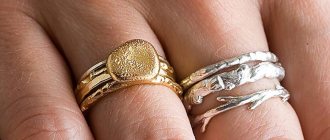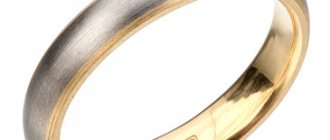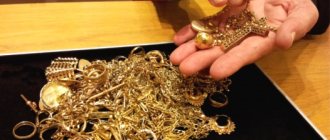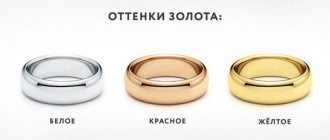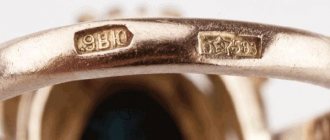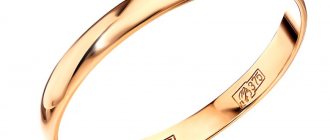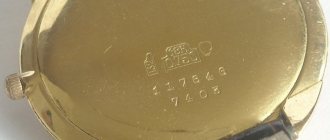According to the Federation of Swiss Watchmakers (FHS), about 500,000 gold watches weighing about 30 tons are produced annually worldwide, with Swiss companies accounting for 90% of this weight. Since pure gold is too soft for cases and bracelets, the industry standard in Switzerland is 18k gold, or 18k gold. This means that in an alloy consisting of 1000 conventional units, there must be at least 750 particles of 999-carat gold, and the proportion of impurities of other metals should not exceed 25%. Impurities not only make gold harder, they give it different shades of color. For example, white color is achieved when 30 parts silver (Ag), 125 parts palladium (Pd) and 95 parts copper (Cu) are added to 750 parts gold (Au). The yellow gold recipe is formulated as follows: 750 Au + 125 Ag + 125 Cu. Pink: 750 Au + 90 Ag + 160 Cu.
Most of the watch gold for the Swiss is produced by the Neuchâtel companies Argor-Heraeus and Metalor, as well as Precinox from La Chaux-de-Fonds. So far they are not complaining about the lack of clients, but the largest concerns - Rolex, Swatch Group, Chopard - already have their own metallurgical production. Piaget and Hublot will soon have the same ones. Some other large manufacturers are still content with their own small laboratories, but the key word is “for now.”
The nanorevolution gave modern alchemists access to the molecular jungle of materials, made it possible to mix what was not mixed before, to fuse the unmeltable. It would be a sin not to take advantage of the chance to equip your beloved client with a watch not only with an in-house movement, but also in a case made of exclusive gold, which shines brighter and is not subject to scratches, like everyone else. So the leading watch houses entered into the competition “who will make the most golden gold.”
Advertising on Forbes
Aloe and honey
The Italians love bright colors and for the sake of their brightest scarlet gold on the market, they increased the copper content to 24.1%. At this concentration, copper is already capable of decomposing gold and covering the alloy with a patina. Therefore, the Italians gave the remaining 0.9% to 950-carat platinum. The Panerai Radiomir 1940 10 Days GMT, presented last October, is made of scarlet gold and is based on a new in-house automatic movement with a ten-day power reserve.
The Germans are a calmer people and more reserved in their tastes, so for the A. Lange & Sohne 1815 “200th Anniversary FA Lange” model, an exclusive alloy called “honey gold” was developed, which has a shade of acacia honey. At the same time, honey gold is as hard as steel (300 Vickers, which is twice as hard as regular 18-karat gold). It's also not cheap, and until this year it was only used in complex Pour Le Merite models, of which several dozen were made. However, for a fairly simple model, an exception was made in honor of the 200th anniversary of the birth of the founder of the house, Ferdinand-Adolph Lange. However, the series is limited to 200 copies.
The history of modern mechanical watches
Everything changed around 1660 , when the great scientists, the Dutchman Christiaan Huygens and the Englishman Robert Hooke , independently developed the balance wheel and hairspring . The introduction of these inventions into the clock mechanism, which is still attributed to Huygens, made it possible to significantly increase the accuracy of the movement. Clocks have become a real tool, and not just a decoration that shows the approximate time.
Also, the new mechanism made it possible to reduce the size of the watch, which began to look more slender and elegant (although it was still worn in a pocket or as a medallion, and not on the wrist).
The “drums” and “bows” of 1700 were 4 cm thick, by 1790 they had decreased to 1.5 cm, and by 1830 watches with only 3 mm thickness began to be produced.
For example, the Girard-Perregaux Museum displays a clock from 1840, housed in an 1828 Florentine gold ducat.
Royal miracle
Its own metallurgical plant so far only appears in the production plans of the Hublot house. But the metallurgical department and laboratory already exist. And they work very effectively. We have already mastered the production of two varieties of gold. Together with the Swiss Federal Institute of Technology in Lausanne, Magic Gold was invented - an amazing combination of pure 24-karat gold with ceramics. Molten gold of the highest purity (24 carats) is fed into the previously obtained porous ceramic substance under enormous pressure, and then watch cases are formed at the highest temperature and again under enormous pressure of inert gas. The resulting alloy has a nature very close to gold. Hublot even got it certified as 18-karat gold. But the great thing is that Magic Gold has a hardness of 1000 Vickers, three times that of steel.
Another achievement of Hublot metallurgists is called King Gold. It has a red tint due to the high copper content, which had to be compensated by adding 5% platinum. “Royal” gold is very bright, but not as durable as “magic” gold. Therefore, it is used in complex models not intended for everyday wear. This year it was used to make a 45mm perpetual calendar case with the Hublot Big Bang Chrono Perpetual Calendar chronograph.
